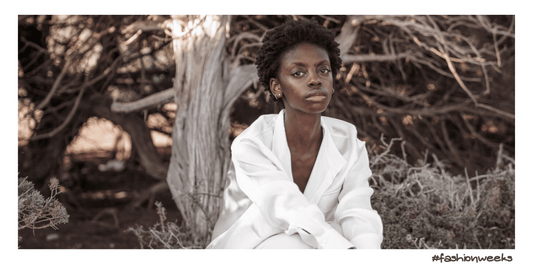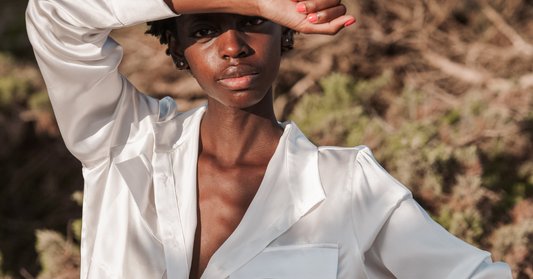We've all heard this before.
Now, imagine if every influencer "influenced" you to make the conscious choice to buy clothes that actually helps the planet?
No, I do not mean the "shirt that helps plant trees", "5% of proceeds go to charity", or the "one shoe for one person in need".
I mean clothes from companies that use environmentally conscious practices like using safe, non-toxic dyes; conserving resources like water; using sustainable materials and manufacturing practices; and taking social responsibility such as working toward being carbon neutral.
Now: a few words I should define before moving forward.
Slow fashion is a movement. It calls for fair wages, fair working conditions, sustainable fabrics and materials, and transparency of resources. Some other attributes are small batch manufacturing, B Corporation status, and minimal environmental impact through zero/low-waste practices.
Fast fashion does the opposite. According to the United Nations Environment Programme (UNEP), fast fashion is responsible for 10% of global carbon emissions, with an expected increase of 25% by 2025.
If you have been influenced by someone on Instagram to buy that trendy leather jacket or the latest trend from a fast fashion brand, I understand you. I have too. Social media has a great amount of power toward making change, spreading awareness, and inspiring and executing action. And social media can be used for good - starting with slow fashion.

Here's how social media and slow fashion can work together:
1. Apply influence to slow fashion brands
Consider how influential it is for an influencer to tell their followers a brand is good, or they must try this product. Think about the enormous impact it would have if they exclusively recommended brands that are slow fashion. The recommendation would bring awareness to brands that practice values that matter to followers/subscribers. Influencers can show being
2. Supporting small (and growing) businesses
The number of purchases from followers would help support small and growing businesses that are already changing how fashion can be an environmentally conscious industry. They would be rewarding a business that is already doing good for consumers, their employees, and the environment.
How can you support small/slow fashion businesses?
It can be:
• sharing on social media your new purchase
• sharing their social media channels on your Instagram story
• following and engaging with their social media
Remember that supporting them goes a long way: an owner can ensure good benefits for their employees; sell products with the best materials possible; help pay for websites, rent for their brick-and-mortar stores, inventory, and warehouses; help grow the business make it more accessible for more consumers; and if it's a really small business, you could helping them support their families as well.
3. Share, educate, and inspire
The best form of influencing is by example.
Whether their theme is cruelty-free, vegan beauty, BIPOC brands, women-owned brands, or inclusive, plus size fashion, there's a relatable theme for everyone. Sharing what you know, what you do, and what you use, inspires others. You might even make a new trend!
Educating others is a vital purpose to social media. Education on slow fashion, fashion's environmental impact, what resources are being depleted, fair wage/workplace conditions, and the politics within it are the catalyst to changing on a global scale. It is necessary that literature on conscious lifestyles, environmental issues, and the fashion industry should make as strong of
4. Creating community and a coalition for change

Social media is meant to connect others and socialize digitally, thus communities are made because of a shared interest. Look up #slowfashion on social media, and the results will be a significant number of followers and influencers that focus on conscious, slow, ethical, sustainable fashion.
Slow fashion is more than just a cool aesthetic on Instagram - it's about taking action too. Here's how:
• call out brands with the hashtag #whomademyclothes
• ask questions about where materials are from and the business practices for their garment workers
• communicate to brands the intention to only buy from companies with a certain attribute (like carbon neutrality, B Corporation certification, etc.)
• research what political policies are active and what could be lobbied to make slow fashion more accessible
When more consumers take action, more brands will act on the growing demand for sustainable, ethical, and slow fashion.
Social media and slow fashion can complement each other given that its audience knows what it is capable of. If we were to utilize how effective influencer marketing is and apply it to working towards a unifying goal, it can be a catalyst for more educating conscious habits to more consumers, political policies on providing safer products, holding accountability for fast fashion companies, and setting a trend to support more diverse and inclusive brands.
Slow fashion can be more than a trend. It can be a lifestyle.
Written by Tatiana Quiapo

About Tatiana:
Écrit par Tatiana




